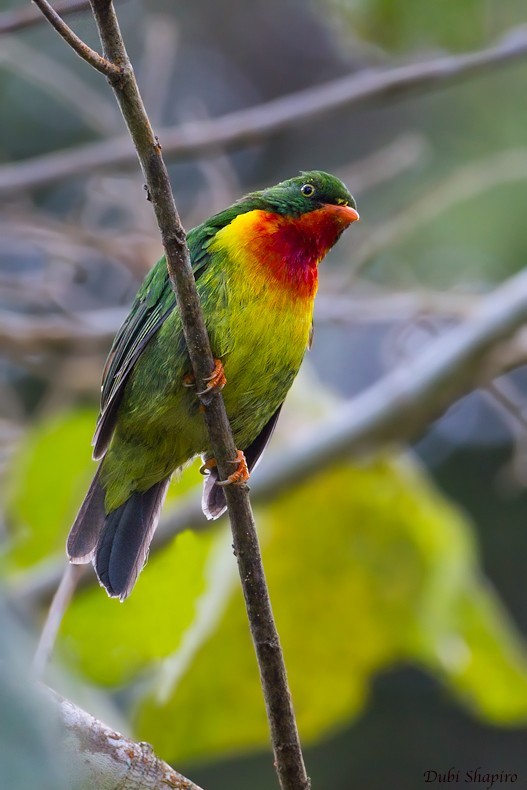Scarlet-breasted Fruiteater
A species of Typical Fruiteaters Scientific name : Pipreola frontalis Genus : Typical Fruiteaters
Scarlet-breasted Fruiteater, A species of Typical Fruiteaters
Botanical name: Pipreola frontalis
Genus: Typical Fruiteaters
Content
Description General Info
 Photo By Dubi Shapiro
Photo By Dubi Shapiro Description
Like all Pipreola fruiteaters, the scarlet-breasted fruiteater is a plump, short-tailed cotinga. It is relatively small for a fruiteater, measuring 15.5–16.5 cm (6.1–6.5 in) in length; its mass ranges from 39.5 to 45.3 g (1.39 to 1.60 oz), with an average of 42.4 g (1.50 oz). The species is sexually dimorphic; the male is considerably more colorful than the female. Both sexes have bright green upperparts, with narrow yellow tips to the tertial feathers. The male's throat and upper breast are bright red (less extensively colored in P. f. squamipectus than in P. f. frontalis), while the female's underparts are yellow with green scaling or spots. Its legs and feet are pink or orange. 
Size
17 cm
Nest Placement
Tree
Feeding Habits
Scarlet-breasted Fruiteater primarily consumes fruit, utilizing hover-gleaning or perching to feed. They exhibit unique dietary preferences geared towards frugivory.
Habitat
The scarlet-breasted Fruiteater primarily dwells in the midstory and subcanopy layers of foothill, premontane, and montane forests. They inhabit areas within dense forest environments and are occasionally found at forest borders. These birds are distributed across broader regions of the Neotropics, favoring lush, forested landscapes rather than open or arid zones.
Dite type
Frugivorous
General Info
Feeding Habits
Bird food type

Fruit
Behavior
The scarlet-breasted fruiteater is arboreal and often occurs higher up, from mid-levels to sub-canopy, than many other members of its genus. Like other fruiteaters, it tends to be rather lethargic. 
Distribution Area
The scarlet-breasted fruiteater is restricted to the eastern slope of the Andes from northeastern Ecuador through eastern Peru to central Bolivia. It is found in montane forests at elevations ranging from 900–2,000 m (3,000–6,600 ft) above sea level. 
Species Status
The International Union for Conservation of Nature (IUCN) categorizes the Scarlet-breasted Fruiteater as a species of "least concern", based on its very large range and its status as a fairly common species within its range. However, its population size has never been quantified, and is thought to be decreasing. 

 Photo By Dubi Shapiro
Photo By Dubi Shapiro Scientific Classification
Phylum
Chordates Class
Birds Order
Perching birds Family
Cotingas Genus
Typical Fruiteaters Species
Scarlet-breasted Fruiteater